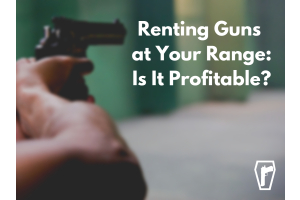Open Carry: Pros & Cons

2016 was an interesting year for guns. As the elections got closer, more and more Americans went out and purchased guns. In January 2016 alone, FBI statistics show that around 2.5 million background checks were run for gun sales. And that was just for one month.
Add to that national tension with regards to racism, firearms, and “mainstream media”, it seems that the time is right to have another discussion about carrying a firearm. This is going to be discussed as a head to head so we can see the pros and cons to each, using the criteria of:
- Keeping a low profile
- Ease of use
- Becoming a target
Keeping a Low Profile
Lets face it, kids these days have their noses so deep in their smartphones that YouTube is full of videos with people running into inanimate objects – people don’t pay attention. Does it really make a difference if you open or conceal carry your Glock 43?
Unfortunately, that’s a loaded question. One major argument for open carry is that it allows the wearer the ability to holster a larger firearm than traditional concealed carry methods. That Glock 43 that may have gone unnoticed in an OWB holster is likely to turn into a Glock 17, leading to increased printing and potential "peeping."
Another issue is that humans are exceptional at pattern recognition. Say you recently had a conversation about the new Hyundai Accent you wanted to buy, and after that it seems that every third car you pass is a Hyundai Accent. That’s you brain picking up on things you may not have been overtly looking for. After 9/11 and the advent of “see something, say something”, Americans know what guns look like and are more likely to key in on them.
In a daily setting, however, people won’t usually see guns unless they’re very observant or they’ve been given some reason to look for them. Because of this, it seems to be wash for open vs. concealed carry in terms of keeping a low profile and blending in when involved in normal day-to-day activities.
Ease of Use
One of the common issues first time carriers face is how easy a holster is to live with. Concealed carriers have a multitude of options, with everything from ankle holsters to tacti-cool appendix rigs. The issue though, is that concealment takes priority over comfort because in many states it illegal to reveal your weapon. In these cases, open carry isn't even allowed except in specific uses, such as hunting.
Outside the waistband carry can definitely be more comfortable and make it easier to access your firearm, but concealability must be taken into account in states that don't allow open carry. For those that do, well, it's obvious that OWB is probably the best way to go in terms of ease of use.
However, if you take into account the number of times you might get the police called on you despite being within your legal rights (if you're legally able to openly carry where you are), then that may be a strike against open for ease of use. As an example, a friend of mine once had the police called on him twice in one day while out with his family because he was legally open carrying, so in that case it added quite a bit of hassle to his day.
When it comes down to it, if you have the legal right to openly carry a firearm, that choice is yours. There are pros and cons for both open and concealed carry, but regardless of which option you choose, knowing your rights and the laws concerning carrying a firearm should be an important part of your decision. Along with firearms training, every citizen should understand the impact that carrying a firearm can have on their ability to defend themselves, their loved ones and their property.










